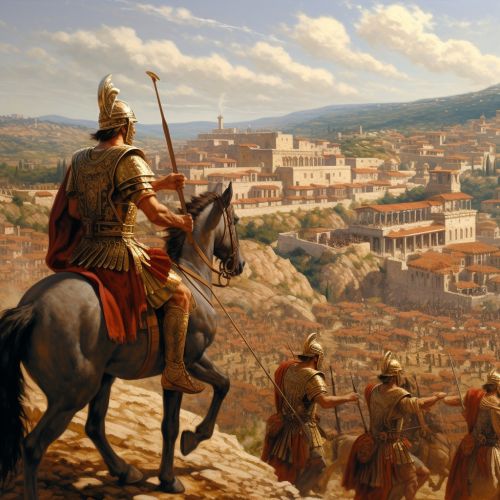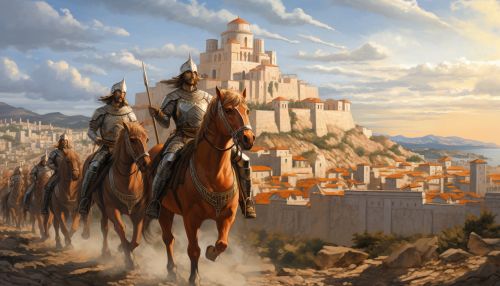Trojan War
Origins
The Trojan War, as documented in ancient Greek literature, is one of the most significant events in Greek mythology. The war is primarily described in Homer's epic poems, the Iliad and the Odyssey, and is also referenced in other works of Greek literature. The war was a ten-year siege of the city of Troy (also known as Ilium) by a coalition of Greek states, led by King Agamemnon of Mycenae. The conflict was initiated after the abduction of Queen Helen of Sparta by the Trojan prince Paris, an event known as the Judgement of Paris.


The Abduction of Helen
The seeds of the Trojan War were sown at the wedding of Peleus and Thetis, where Eris, the goddess of discord, presented a golden apple inscribed with the words "to the fairest". This led to a dispute among Hera, Athena, and Aphrodite, which was ultimately resolved by Paris. Paris, the prince of Troy, was chosen to decide who was the fairest among the three goddesses. Each goddess attempted to bribe Paris, but it was Aphrodite's promise of the most beautiful woman in the world that swayed him. This woman was Helen, the wife of Menelaus, king of Sparta. Paris, with the aid of Aphrodite, abducted Helen and took her to Troy, sparking the events that led to the Trojan War.
The Greek Coalition
The abduction of Helen by Paris incited the wrath of Menelaus and his brother Agamemnon, the king of Mycenae. They rallied a coalition of Greek states, including warriors such as Achilles, Odysseus, and Ajax, to wage war against Troy and retrieve Helen. This coalition, known as the Achaean forces, sailed to Troy in a fleet of a thousand ships, marking the beginning of the Trojan War.
The War
The Trojan War was a protracted conflict, lasting ten years. The war was characterized by numerous battles, individual duels, and strategic maneuvers. The most notable of these events was the duel between Achilles, the greatest of the Greek warriors, and Hector, the eldest son of King Priam of Troy and the city's greatest defender. Achilles ultimately killed Hector, dragging his body around the walls of Troy in his chariot.
The Trojan Horse
The war reached its climax with the introduction of the Trojan Horse, a stratagem devised by Odysseus. The Greeks built a large wooden horse, which they left outside the gates of Troy as a supposed offering to Athena. The Trojans, believing the horse to be a gift, brought it into the city. Unbeknownst to them, the horse was filled with Greek soldiers, who emerged from the horse at night and opened the city gates, allowing the Greek forces to enter Troy and sack the city.
Aftermath
The fall of Troy marked the end of the Trojan War. The Greeks, having achieved their objective, set sail for home. However, the journey back was fraught with difficulties. Many of the Greek heroes faced numerous trials and tribulations, with some, like Agamemnon, meeting tragic ends. The most famous of these journeys is that of Odysseus, which is detailed in Homer's Odyssey.
Historical Context
The historicity of the Trojan War is a topic of ongoing debate among historians and archaeologists. While the war is rooted in mythology, archaeological evidence suggests that there may be a historical basis for the conflict. The ancient city of Troy, located in modern-day Turkey, was discovered by archaeologist Heinrich Schliemann in the 19th century. The city shows evidence of multiple layers of destruction and rebuilding, suggesting a history of conflict.
